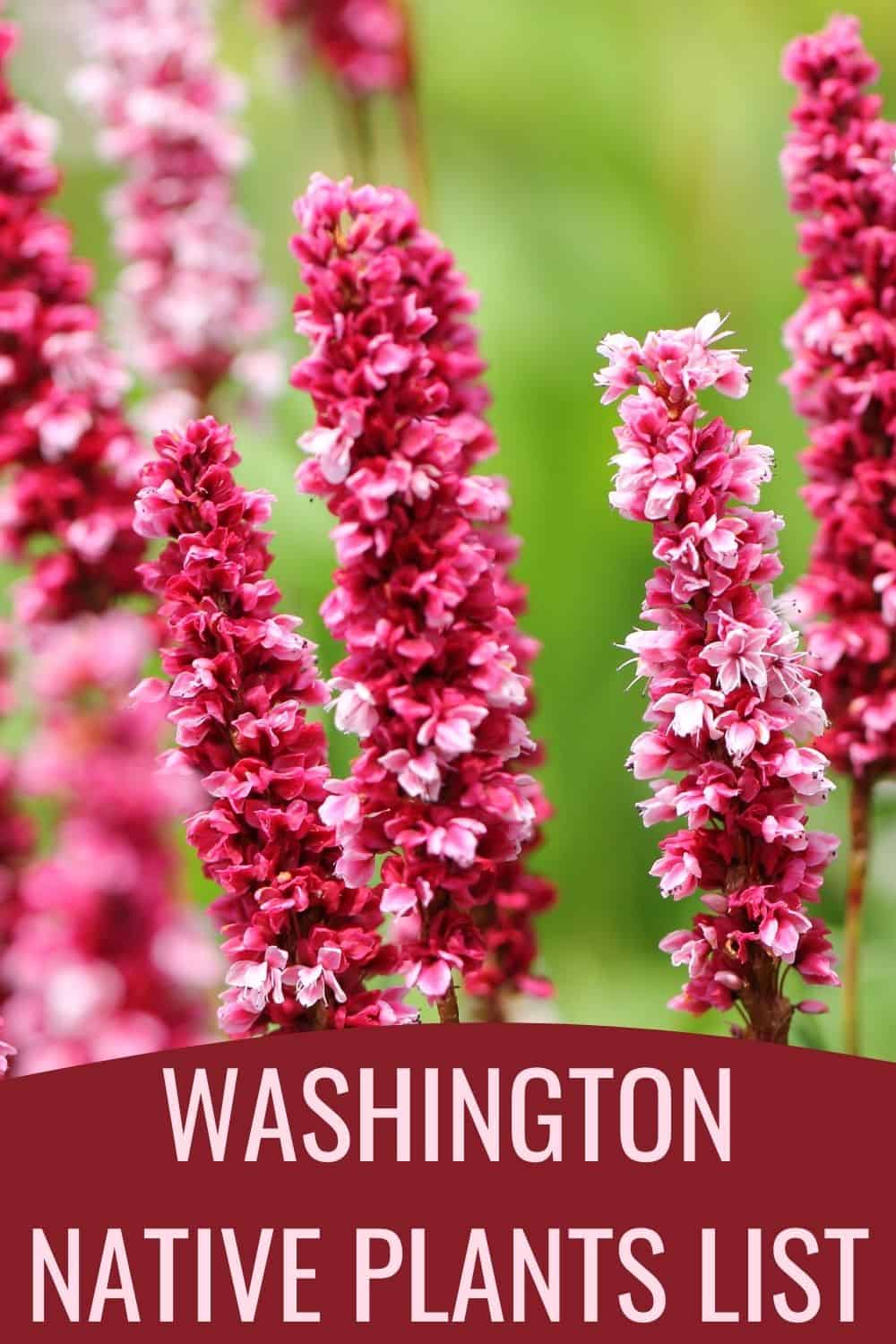Washington state is the only state to be named after a U.S. President. It’s located in the upper northwest portion of the United States, above California. An interesting fact about Washington is that it has more glaciers than all of the other 47 contiguous states combined. It also has a lot of beautiful native plants and flowers.
When choosing plants for your own garden or landscape, you should always go native. This Washington native plants list will help you get started on the right foot.
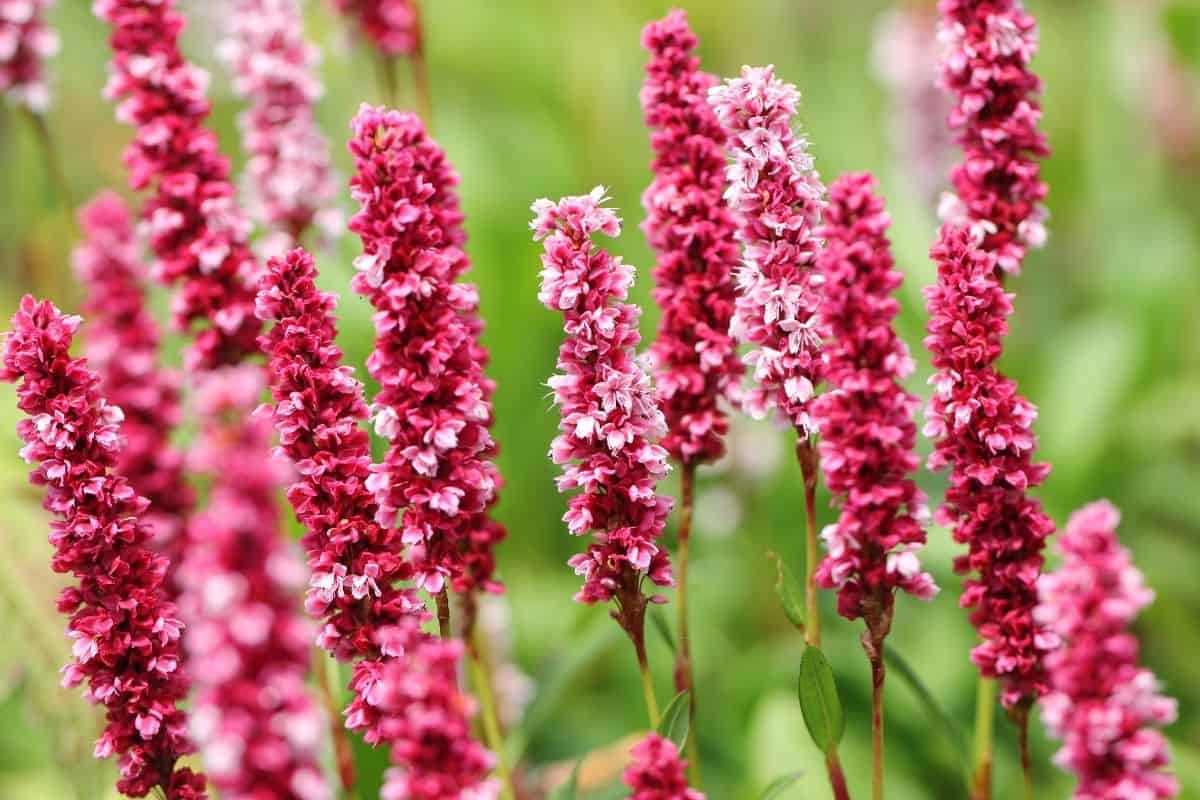
Why Native Plants Are Important
Before we get to the list of plants, let’s talk about why native plants are important. There are two important reasons why you want to use native plants in your home garden or landscape. The first is that they will be easier and more affordable for you to care for. The second is that they provide a beneficial need to the local ecosystem.
Some native plants are food for local species and others provide shelter to small mammals. They can also help prevent erosion and even improve air quality in an area. As a gardener, you’ll use less water to keep them healthy, which saves resources. They also need little to no pesticides since they have adapted to local pests and also to local diseases.
Washington Native Plants List
Now let’s look at some native plants to Washington that you might consider for your garden.
1. Common yarrow (Achillea millefolium)
Common yarrow is one of the most common native plants you will find in the country and is native to most all of the states, Washington included. It’s still a good plant to put on this list because it’s easy to care for, low maintenance, looks nice and provides many benefits to the local ecosystem.
It is classified as an herb and can grow from 4 inches to 39 inches tall. It has small, flat-topped heads of flowers at the tops of the stems and can take on a bushy appearance when it grows in fully.
The white and yellow flowers are pretty to look at and also attract native bees and other pollinators. They are also great in cut flower gardens and make great fillers for bouquets.
2. Monkshood (Aconitum columbianum)
Monkshood is a tall, leafy member of the buttercup family. It is sometimes called Columbian monkshood. The erect stems can grow from 2-6 feet tall, and the blue or violet-colored flowers grow in a raceme at the tops of the stems.
Flowering starts at the bottom of the spike and moves upwards. Monkshood blooms in July and August and like shade and moist, rich soils with a lot of watering. They will attract bumblebees, hawkmoths, and hummingbirds to your garden.
3. Baneberry (Actaea rubra)
Baneberry is a perennial in the buttercup family that looks a bit different than flowering buttercups. It’s a bushy plant with large, divided leaves and thick, rounded clusters of small white flowers.
The flowers turn into red berries that are poisonous if ingested by humans, but some birds will eat them in small amounts. It likes moist, acidic, well-drained soil and full sun to part shade.
4. Orange agoseris (Agoseris aurantiaca)
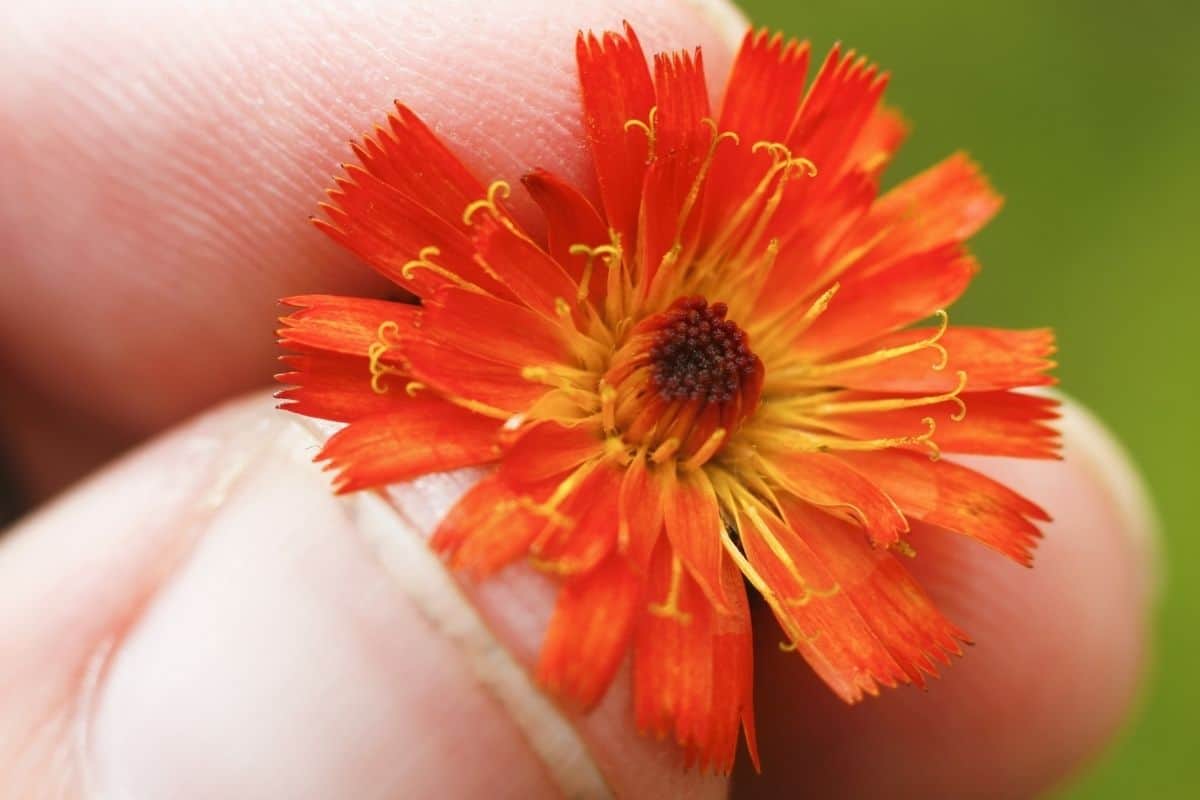
Orange agoseris is part of the aster family. It has big, beautiful yellow or orange blooms that stand out in any garden. It’s very easily recognized and is the only orange-colored agoseris.
It is natively found in grassy slopes and moist meadows from middle to high elevations. It can grow from 1-3 feet tall and the flower heads bloom at the tops of the stalks. It likes moist, loamy soil and lots of full sun.
5. Alpine anemone (Anemone drummondii var. drummondii)
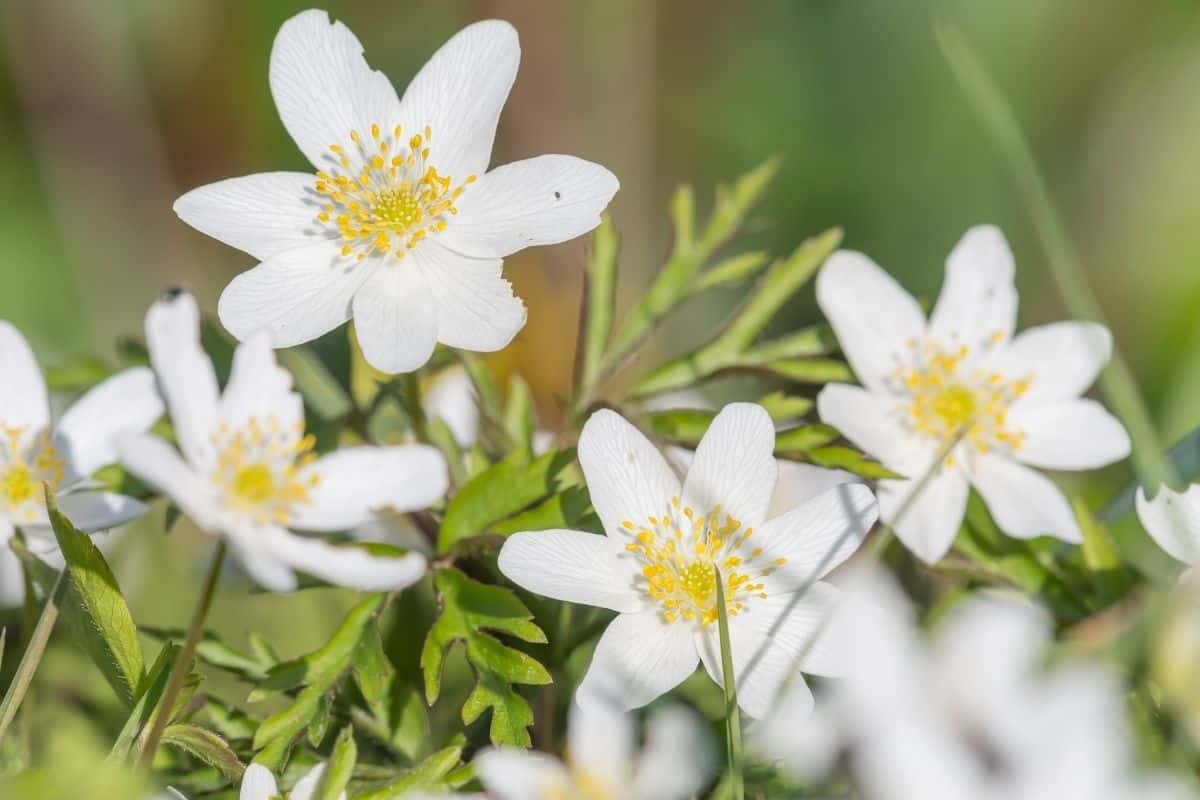
Another anemone native to Washington state, alpine anemone blooms in early summer and is sometimes known by the common name Drummond’s anemone.
The flowers are usually white, but sometimes have a slight blue tint to them. It’s a fairly short plant at only about 9 inches tall, on average, and it likes full sun to part shade and does best in mountainous areas.
6. Western pasque flower (Anemone occidentalis)
Also an anemone, Western pasque flower is sometimes called Western anemone. The stems grow about 8-20 inches tall and the white and yellow flowers bloom at the tops of these stems. The leaves, stems, and undersides of the petals have fine hairs.
They bloom from May to August and are natively found in mid-to-high elevations and mountain slopes. They like full sun and well-drained soil. All parts of this plant are poisonous when fresh.
7. Blue anemone (Anemone oregana)
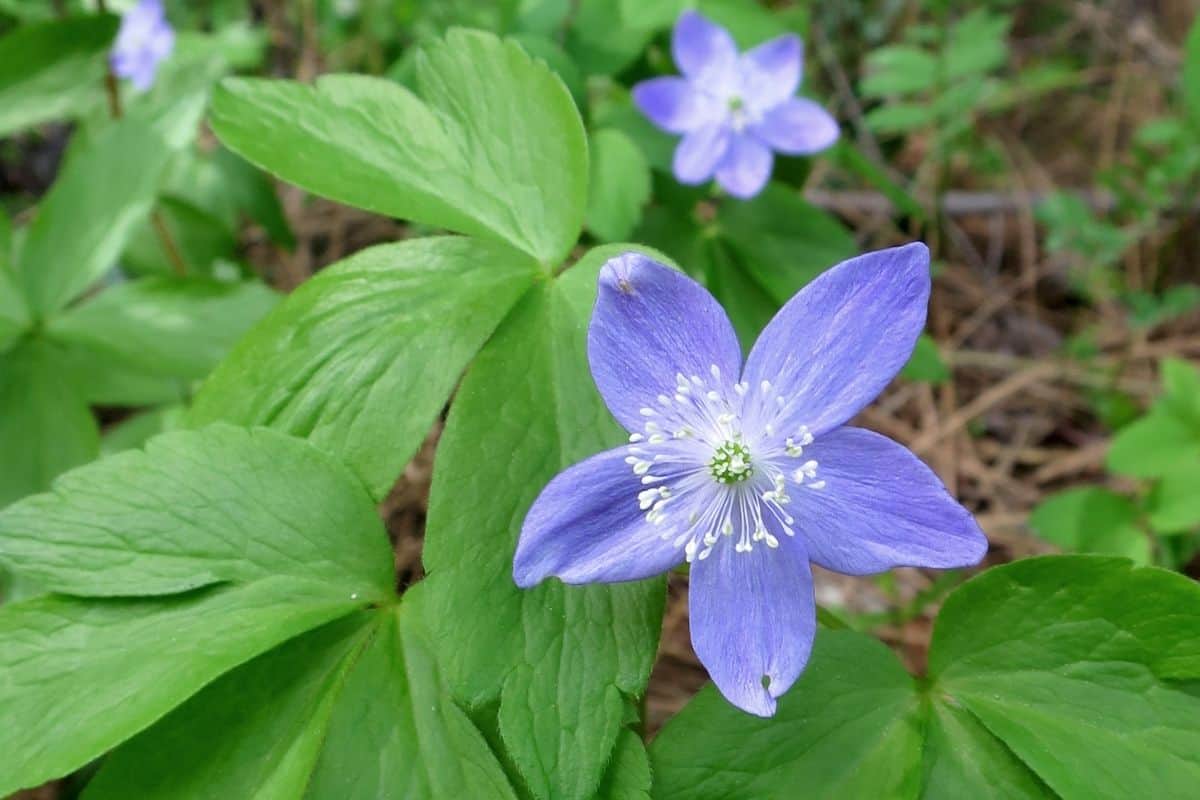
This flower is also known as Oregon windflower. It’s also in the buttercup family and is sometimes called the blue windflower because the blooms are blue to violet-colored. It is native to forest areas of Washington and the western United States.
Blue anemone can grow from about 6-12 inches tall and likes full shade to part shade.
8. Red columbine (Aquilegia formosa)
Red columbine is a bright, showy plant that makes a big, bold statement in your garden or landscape but is actually fairly easy to care for. This perennial is also called crimson columbine or Western columbine.
It grows from 2-3 feet tall and has delicate foliage and stunning red and yellow flowers that hand down at the ends of the branches. Red columbines attract hummingbirds and other pollinators. They bloom in May through August and like dry, moist soil and full sun to part shade.
9. Red bearberry (Arctostaphylos uva-ursi)
Red bearberry is a mat-forming evergreen shrub that blooms pretty pink flowers that later turn into red berries. It’s found most commonly in coastal bluffs, rock areas, and forest openings.
It can grow up to 8 inches in height and has a spread of 15 feet. The flowers are usually less than 5mm in length and grow at the tips of the stems.
Red bearberry is very winter-hardy and can do well in cold areas. The flowers bloom from March through June and it likes dry to moist, acidic soil.
10. Mountain arnica (Arnica latifolia)
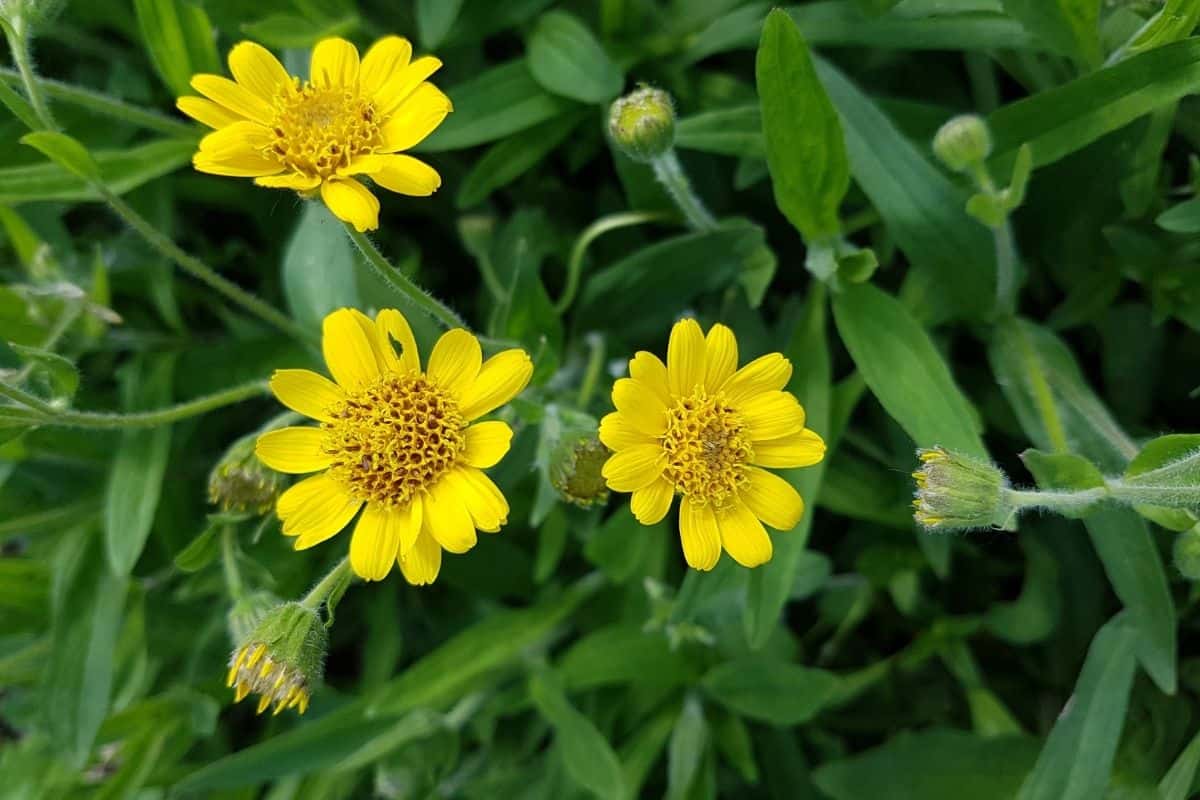
Next, we have mountain arnica, also called broadleaf arnica, or daffodil leopardbane. It’s a member of the aster family, related to sunflowers.
The yellow-ray flowers with darker yellow disc flowers in the center resemble small sunflowers. It can grow from 4-24 inches tall and the bright yellow flowers bloom from the tops of the stems.
Mountain arnica blooms in June and July, and likes full sun to part shade, and variable soil conditions.
11. Arrowleaf balsamroot (Balsamorhiza sagittate)
Arrowleaf balsamroot is typically found in deep, rich soils in its native environment. It’s part of the aster family and gets its common name from the arrow shapes the leaves take. It has a large, woody taproot and the stems can grow from 8-24 inches tall.
A solitary, yellow, sunflower-like bloom appears at the top of each stem. This plant blooms from May to July and likes full sun. A moist, sandy, or gravel-like soil will do best. This plant has special value to native bees and bumblebees but will attract all types of pollinators.
12. Bottle brush (Bistorta bistortoides)
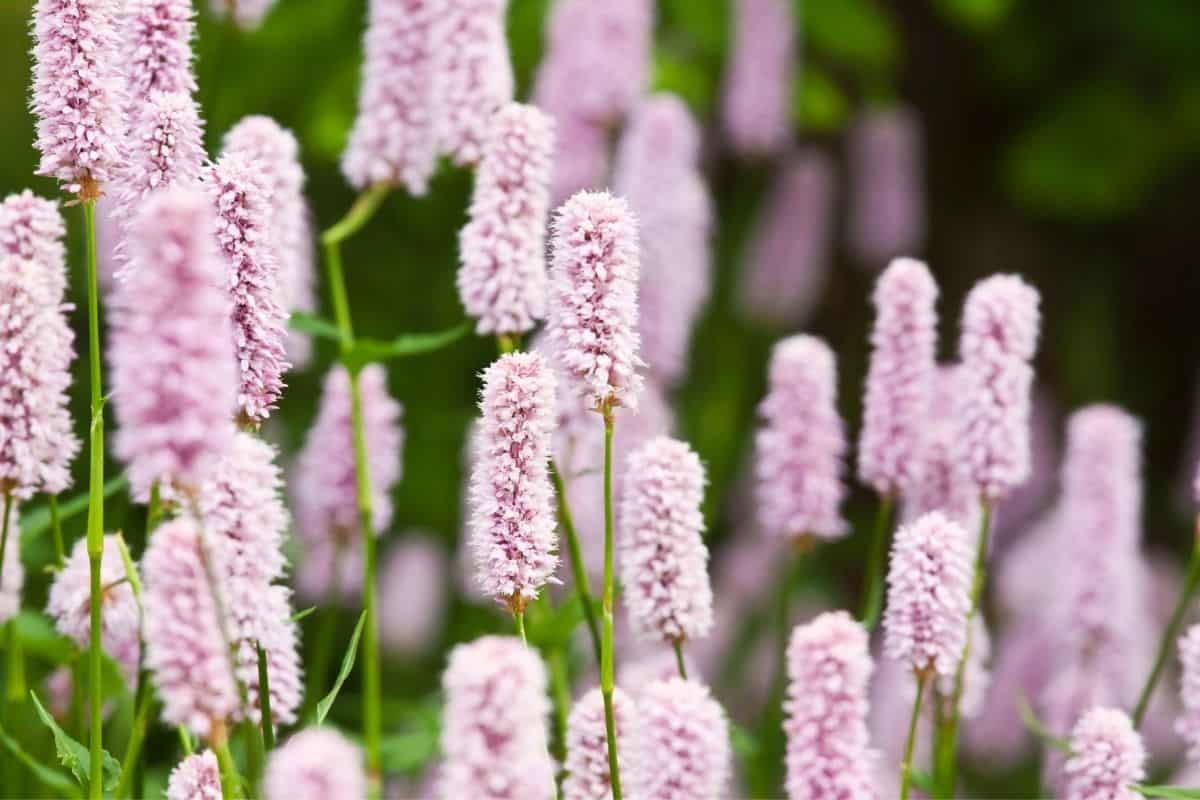
Bottlebrush is also called American bistort or sometimes Western bistort. The common name comes from the fact that it looks like a brush you can use to clean bottles. It’s part of the buckwheat family and one of the most common mountain native wildflowers. It’s easy to care for, looks unique in your garden, and is beneficial to native insects. They bloom from May to August and like full sun and a lot of water.
13. Wild hyacinth (Brodiaea douglasii)
This is a showy, unique blue to purple flower from the lily family that will make a stunning appearance in your garden. Wild hyacinth is also known as large-flower tritelia. It has pale to deep blue bell-shaped flowers that bloom in an umbel at the top of the stems.
Wild hyacinth blooms from April to July and is natively found in grassy areas, often among sagebrush.
14. Cat’s ear (Calochortus lyallii)
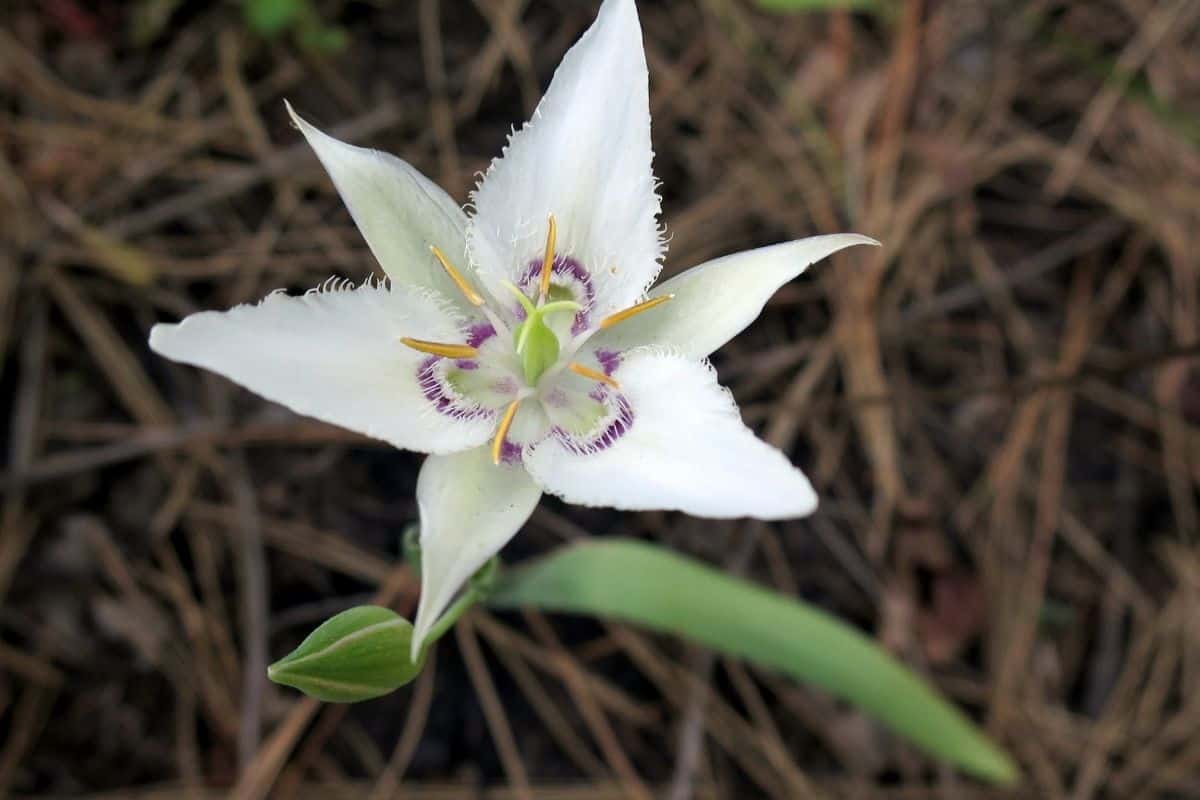
Cat’s ear gets its common name from the unique appearance of the flowers, which seem to take the shape of a cat’s ear. It is also called Lyall’s mariposa lily. It’s part of the lily family, blooms white flowers in June, and likes part shade to full shade.
Too much direct sun on this one can cause it to burn. It prefers dry soil so avoid overwatering.
15. Fairyslipper (Calypso bulbosa)
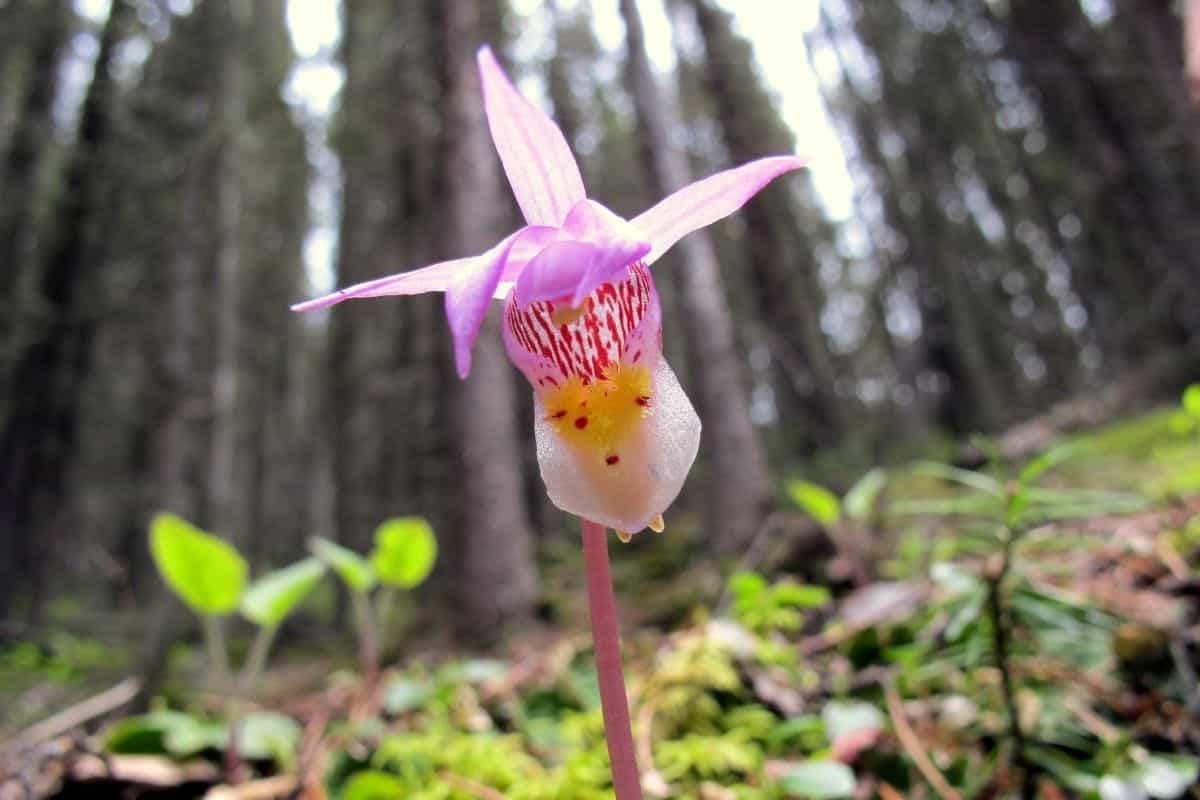
Fairyslipper is also called Venus’s slipper, or the Calypso orchid. It’s a perennial from the orchid family that is often found natively in undisturbed mountain forests.
The flowers are pink, purple, or shades of purple-red often accented with a white lip and dark purple spots. It can grow up to about 8 inches tall and rarely will grow taller. It likes shade and too much sun can burn and kill it.
If you have the right conditions for this unique native, it will make a beautiful sight in your garden or landscape.
16. Merten’s Mountain-heather (Cassiope mertensiana)
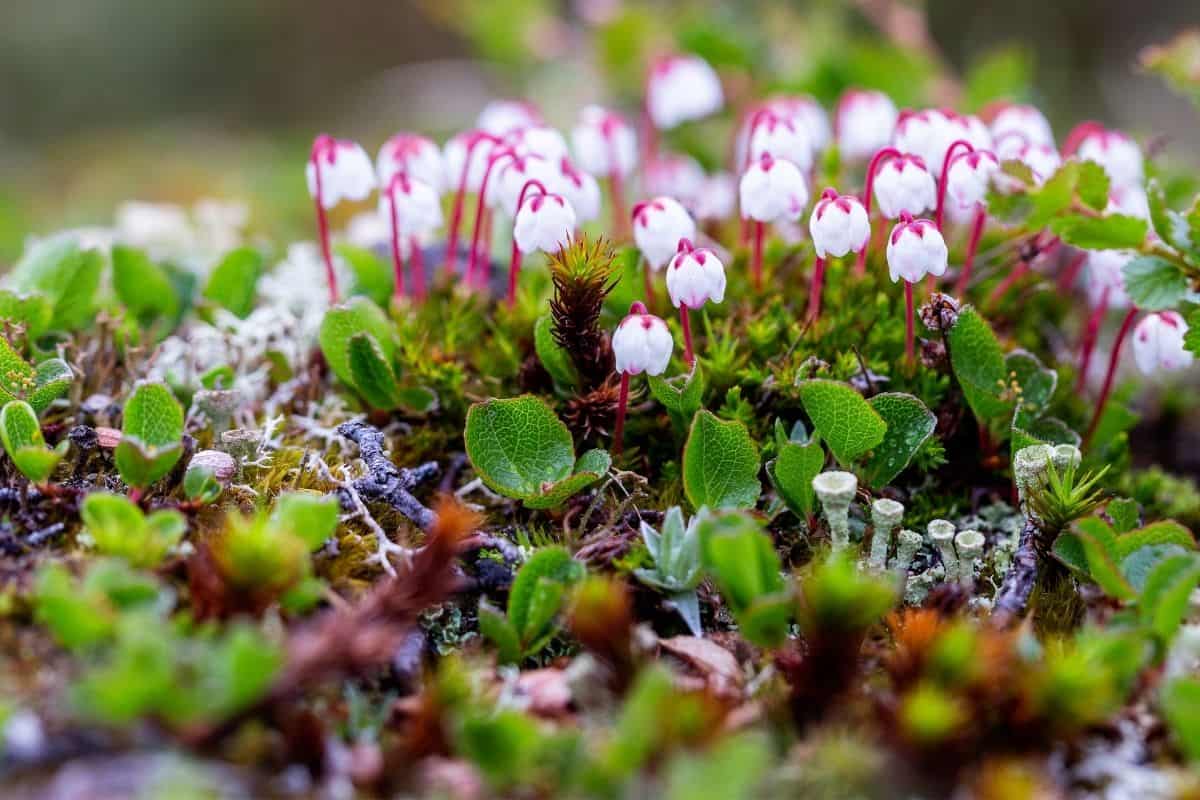
This is a low, matted evergreen shrub also called Western moss heather. It has tough branches up to 12 inches tall and small, white, bell-like flowers that hang down from the tips of the slender stalks. They can sometimes take on a star-like appearance, making it a unique flower when it is in bloom.
Mountian heather usually blooms from July to August and likes cool, damp, gritty soil and full sun.
If you’d like more information about this and other native plants to the state, you can use the Washington Native Plants Society.
Washington native plants list FAQ
Here are some commonly asked questions about native plants in the state.
What is the state flower of Washington?
The state flower of Washington is the Coast Rhododendron. Want to learn more about state flowers? We have a state flowers list 🙂
What trees are native to Washington state?
This state has about 25 native tree species. These include the Western hemlock, Douglas fir, Western red cedar, Sitka spruce, red alder, and ponderosa pine. The Western hemlock (Tsuga heterophylla) is Washington’s state tree.
Where can I buy native plants or seeds in Washington?
When looking to buy native plants or seeds, local nurseries that specialize in natives are your best bet. The Washington Native Plant Society has a great resource list of where to find native plant nurseries, sales, and vendors. You can also check with your local Conservation District to learn if they sell native plants.
